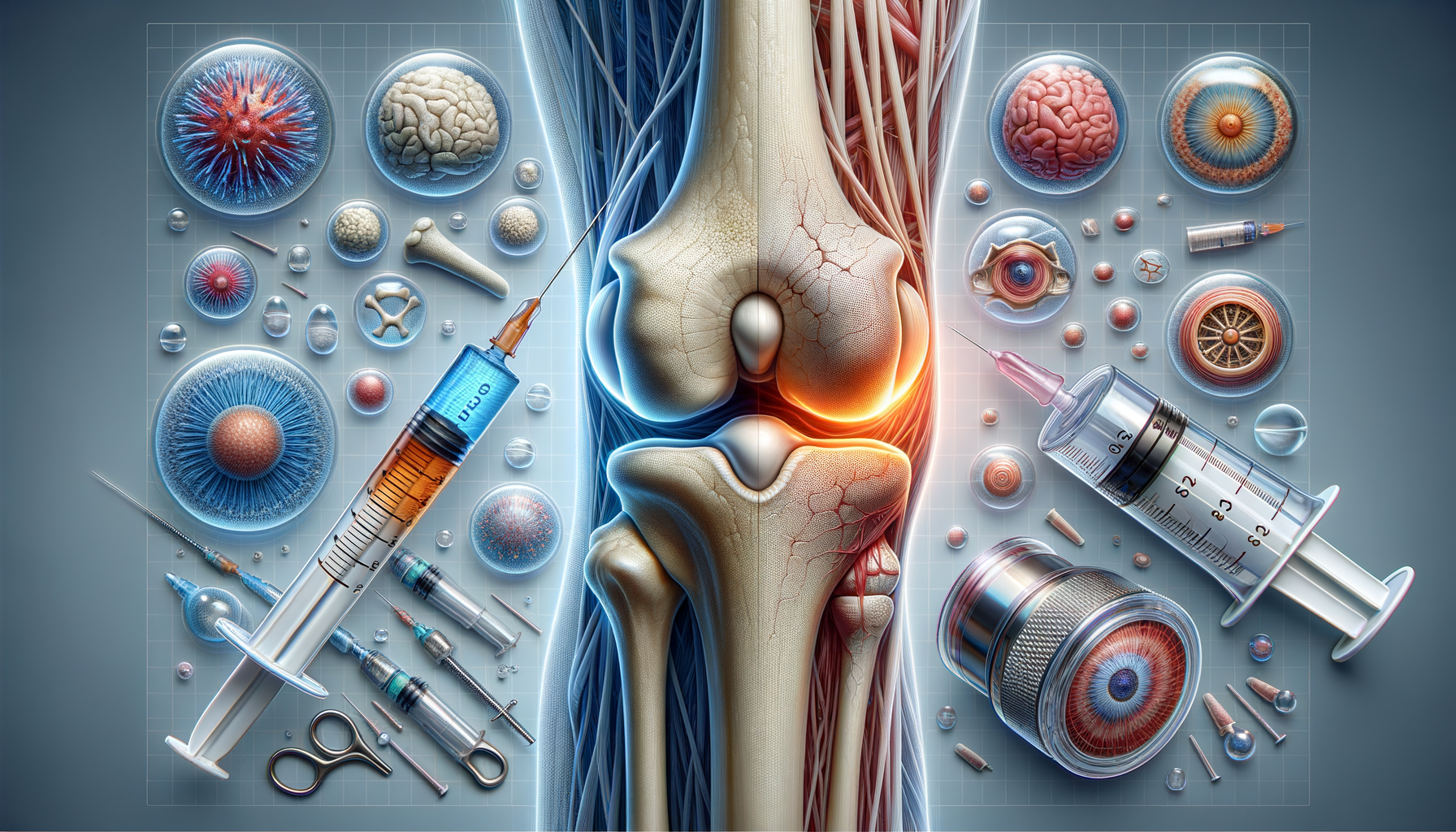Introduction to Arthritis and Its Impact
Arthritis is a common yet complex condition that affects millions of individuals worldwide. Characterized by inflammation and stiffness in the joints, arthritis can significantly impair daily activities and reduce the quality of life. Understanding arthritis is crucial for managing its symptoms and exploring effective treatment options. This article delves into the various types of arthritis injections, which are among the numerous treatment avenues available to manage this condition.
Arthritis can manifest in different forms, with osteoarthritis and rheumatoid arthritis being the most prevalent. While osteoarthritis is primarily due to the wear and tear of cartilage, rheumatoid arthritis is an autoimmune disorder where the body’s immune system attacks joint tissues. Both types can lead to chronic pain and mobility issues, necessitating a comprehensive approach to treatment.
Injections have emerged as a viable treatment option for arthritis, offering targeted relief for joint pain and inflammation. They are particularly beneficial for individuals who have not found adequate relief from oral medications or physical therapy. As we explore the different types of arthritis injections, it is important to consider their effectiveness, potential side effects, and suitability for various forms of arthritis.
Understanding Corticosteroid Injections
Corticosteroid injections are one of the top options for managing arthritis-related inflammation and pain. These injections deliver powerful anti-inflammatory medication directly into the affected joint, providing rapid relief from symptoms. Corticosteroids work by suppressing the immune response that contributes to joint inflammation, thus reducing swelling and discomfort.
One of the key advantages of corticosteroid injections is their ability to provide quick relief, often within 24 to 48 hours. This makes them an attractive option for individuals experiencing severe pain or flare-ups. However, the effects of corticosteroid injections are typically temporary, lasting a few weeks to a few months. As a result, they are often used in conjunction with other treatment modalities, such as physical therapy and lifestyle modifications.
Despite their effectiveness, corticosteroid injections are not without potential side effects. Repeated use can lead to joint damage, skin thinning, and increased risk of infections. Therefore, healthcare providers usually limit the number of injections a patient can receive in a year. It is essential for patients to discuss the risks and benefits with their healthcare provider to determine if corticosteroid injections are a suitable option for their specific condition.
The Role of Hyaluronic Acid Injections
Hyaluronic acid injections are another treatment option for arthritis, particularly for osteoarthritis of the knee. Hyaluronic acid is a naturally occurring substance in joint fluid that helps lubricate and cushion joints. In individuals with osteoarthritis, the concentration of hyaluronic acid in the joint fluid decreases, leading to increased friction and pain.
Injecting hyaluronic acid into the joint can help restore its natural lubrication, potentially reducing pain and improving mobility. This treatment is particularly beneficial for individuals who have not responded well to other conservative treatments. Unlike corticosteroid injections, which provide immediate relief, the effects of hyaluronic acid injections may take several weeks to become noticeable but can last for several months.
Hyaluronic acid injections are generally considered safe, with minimal side effects. However, they may not be suitable for everyone, and their effectiveness can vary from person to person. It is important for patients to have realistic expectations and to discuss their treatment goals with their healthcare provider to determine if hyaluronic acid injections are a viable option for their arthritis management.
Exploring Newer Injection Therapies
In addition to traditional injection therapies, newer treatments are being studied for their potential to manage arthritis symptoms. These include platelet-rich plasma (PRP) injections and stem cell therapy, both of which are gaining attention for their regenerative properties and potential to promote healing in damaged tissues.
PRP injections involve using a concentration of a patient’s own platelets to stimulate healing in the affected joint. Platelets contain growth factors that can aid in tissue repair and reduce inflammation. While research on PRP injections is still ongoing, early studies suggest they may offer relief for certain individuals with arthritis, particularly those with mild to moderate osteoarthritis.
Stem cell therapy is another promising area of research. This approach involves using stem cells to regenerate damaged joint tissues and improve joint function. Although still in the experimental stages, stem cell therapy holds potential for providing long-term relief and possibly slowing the progression of arthritis. However, more research is needed to fully understand its efficacy and safety.
As these newer therapies continue to be explored, they offer hope for individuals seeking alternative treatment options for arthritis. Patients interested in these therapies should consult with their healthcare provider to discuss the potential benefits and risks, as well as the availability of these treatments.
Conclusion: Making Informed Decisions About Arthritis Injections
Arthritis injections, including corticosteroids, hyaluronic acid, and newer therapies like PRP and stem cell treatments, offer a range of options for managing joint pain and inflammation. Each type of injection has its own set of benefits and considerations, making it essential for patients to work closely with their healthcare providers to determine the most appropriate treatment plan.
While injections can provide significant relief, they are often part of a broader treatment strategy that includes lifestyle modifications, physical therapy, and medication. Patients should be informed about the potential side effects and limitations of each injection type to make educated decisions about their arthritis management.
Ultimately, the goal of arthritis treatment is to improve quality of life by reducing pain and enhancing mobility. By understanding the available injection options and staying informed about emerging therapies, individuals with arthritis can take proactive steps towards managing their condition effectively.




Leave a Reply